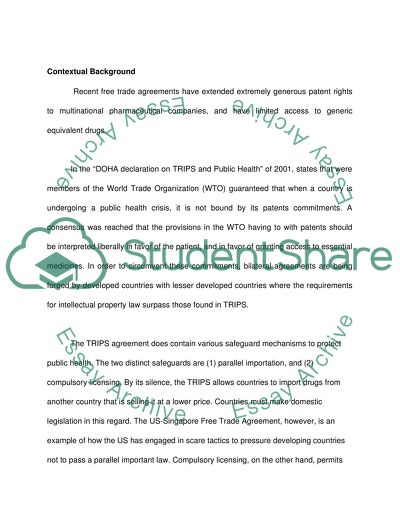A Trade Environment and the Rights of Patients Dissertation. Retrieved from https://studentshare.org/law/1527755-intellectual-property-law-essay
A Trade Environment and the Rights of Patients Dissertation. https://studentshare.org/law/1527755-intellectual-property-law-essay.


